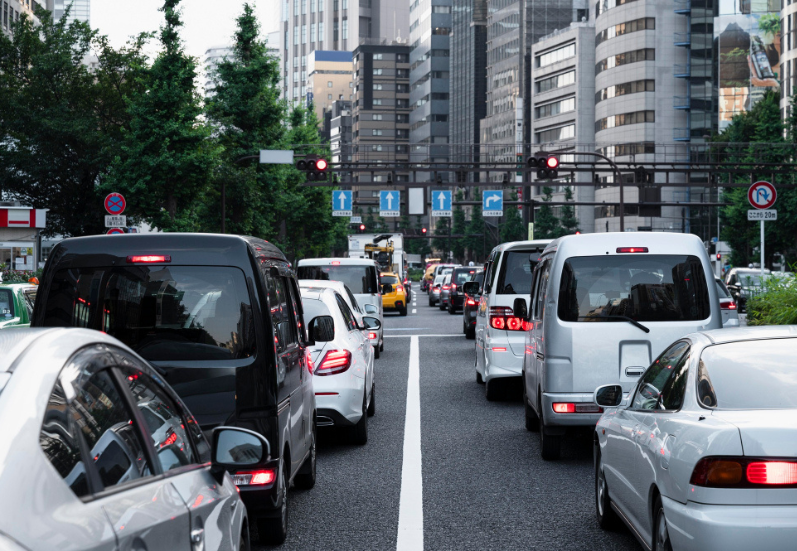
Over the past 25 years, Queens traffic has seen a changing pattern in its rules, regulations, and shapes. An increased population combined with a public transport expansion plan is the key contributor to the transformation.
We all know that our world has changed in the last few years, and traffic patterns in Queens are no different. Where change is the only constant, you cannot expect the same sort of problems and according arrangements for years. For instance, in the early 2000s, roads in Queens were predominantly filled with personal vehicles.
You cannot see that right now. In 2025, traffic plans will be more about finding sustainable solutions with better traffic management. As expected, Queens has also undergone a major transformation in its traffic patterns while considering more bike lanes and pedestrian-friendly areas.
This is a sustainable solution and also a better alternative mode of transport for residents. While it was heavily congested during peak hours, people in Queens faced a lot of issues in their daily lives. Over time, this problem of Queens traffic was solved with the introduction of more efficient public transport.
These small changes over the years have launched significant benefits for Queens’ people while they are on the roads. With careful planning and safety protocols travelers are safer than ever on Queens roads. Consequently, the role of a Queens Motorcycle Accident Lawyer has also become undeniable in recent years.
The traffic dynamics of 2025 in Queens are redesigned and repurposed. For instance, advanced public transport is being used with the latest technology that reduces environmental effects. Also, the Queens Bus Network is more efficient and frequent to create a positive impact on residents’ lives.
This evolution in traffic patterns is all about adaptation and innovation!
Evolution of Queens Traffic Patterns 2000 – 2025

By now, you have already understood that Queens traffic has witnessed a significant change in its management and patterns. Understanding the factors behind is essential to get an idea about how we can cope with the changing needs in traffic management.
A few significant areas, like urban development and adapting new traffic management technologies, are influential factors.
Impact of Urban Development on Traffic Flow
More development in a particular place equals denser traffic. Between 2000 and 2025, if you compare, you will see a significant increase in residential and commercial zones in popular areas like South Jamaica and Springfield Gardens.
This means you will see more vehicles on the roads these days compared to 2000 in Queens. It also affected the daily commutes with –
- Longer travel times
- High congestion in peak hours
Public Transportation Advancements
Road traffic in 2025 is a major concern not only for Queens but worldwide. However, advancement in public transport has created a proper loop for residents in Queens. They are now more comfortable with the advanced public transport network with more public vehicles and subways.
For instance, in North Williamsburg, subways are the most preferred transport solution for residents. As a result, it not only reduces traffic on roads but also solves daily road crossing issues of public.
Apart from that, Queens introduced new bus lanes and encouraged people to get into those buses with frequent availability. The more people use public transport the less traffic they will see on roads. Queens properly utilized this pattern of using public transit over private vehicles.
Implementation of Traffic Management Technologies
Queens traffic leverages new technologies and traffic management tools. As a result, they are able to solve critical traffic congestion with the help of automated signal systems and real-time traffic monitoring.
It significantly helps manage the flow of vehicles, which in turn helps manage traffic during peak hours. Additionally, Queens use congestion pricing (a transportation policy designed to reduce congestion by charging fees for using congested roads) to encourage drivers to take alternative routes.
Challenges and Responses in Traffic Management
Queens traffic has faced multiple challenges in the last few decades. From increased population to sustainability concerns, they have been pushed to take steps at every stage of traffic management.
Controlled traffic management leads to efficient roadways for people. Check out the challenges and how Queens reacted to those for traffic management.
Adapting to Population Growth
In between 25 years, Queens traffic management has changed a lot and one of the significant reason being the population. More people have started using vehicles, and as a result, longer travel times have become common among Queens people.
However, they have taken certain steps like introducing a smart traffic management system to use real time data and optimize the traffic flow. They way, they can reduce the wait time and focus on moving traffic management.
Also, Queens roads see more public transport in 2024 than they did in the 2000s. From trains to buses increase number of public transport options reduces personal vehicle usage and thus better congestion management.
Environmental Considerations in Traffic Planning
In 2025, everyone should be aware of and consider environmental issues as a prime concern. Traffic management is a prime area where environmental facts are getting manipulated every day. From air pollution to greenhouse gas emissions, vehicles on roads are continuously affecting our planet.
However, climate change with poor air quality was a real headache for the Queens traffic. However, they have considered sustainable traffic systems in recent years. As a result, nowadays we see on Queens roads-
- Electric vehicles
- Eco-friendly road designs and infrastructures
- More cycling, biking, and walking routes
Policy Changes and Regulatory Impact
Changing needs of roads leads to policy shifts. Well, the aim is always to make a better traffic management considering all the latest concerns and needs.
Queens traffic regulations focus on safety and efficiency on the roads. For instance, it has introduced work zones to drive safely and also work done with clear information. Also, it has introduced congestion pricing to reduce congestion and encourage drivers to take alternative routes.
This way, traffic management becomes super easy!
Conclusion
Queens traffic has seen significant changes in patterns from 2000 to 2025. Adjustments in traffic light timing, like those on 3rd Avenue, have played a role in reshaping the flow of vehicles. Congestion pricing and infrastructure updates have also influenced how traffic moves through key areas.
The introduction of congestion pricing has affected traffic trends, even as some debates around these measures continue. Reports show that traffic has slightly increased in certain parts of the city.
Efforts to improve public transport, including slower bus speeds due to road congestion, are addressed by city planners. Reviews suggest a lack of dedicated infrastructure as a challenge, revealing an ongoing process to balance traffic needs with city development.
Overall, Queens continues to adapt to these evolving traffic patterns, aiming to create a more efficient and safe transportation environment.
Read Also:
- Finding the Best Legal Support After a Road Accident
- How To File A Compensation Claim For A Traffic Accident
- Rear-End Collisions: Causes, Potential Injuries, and the Legal Road Ahead










0 Reply
No comments yet.